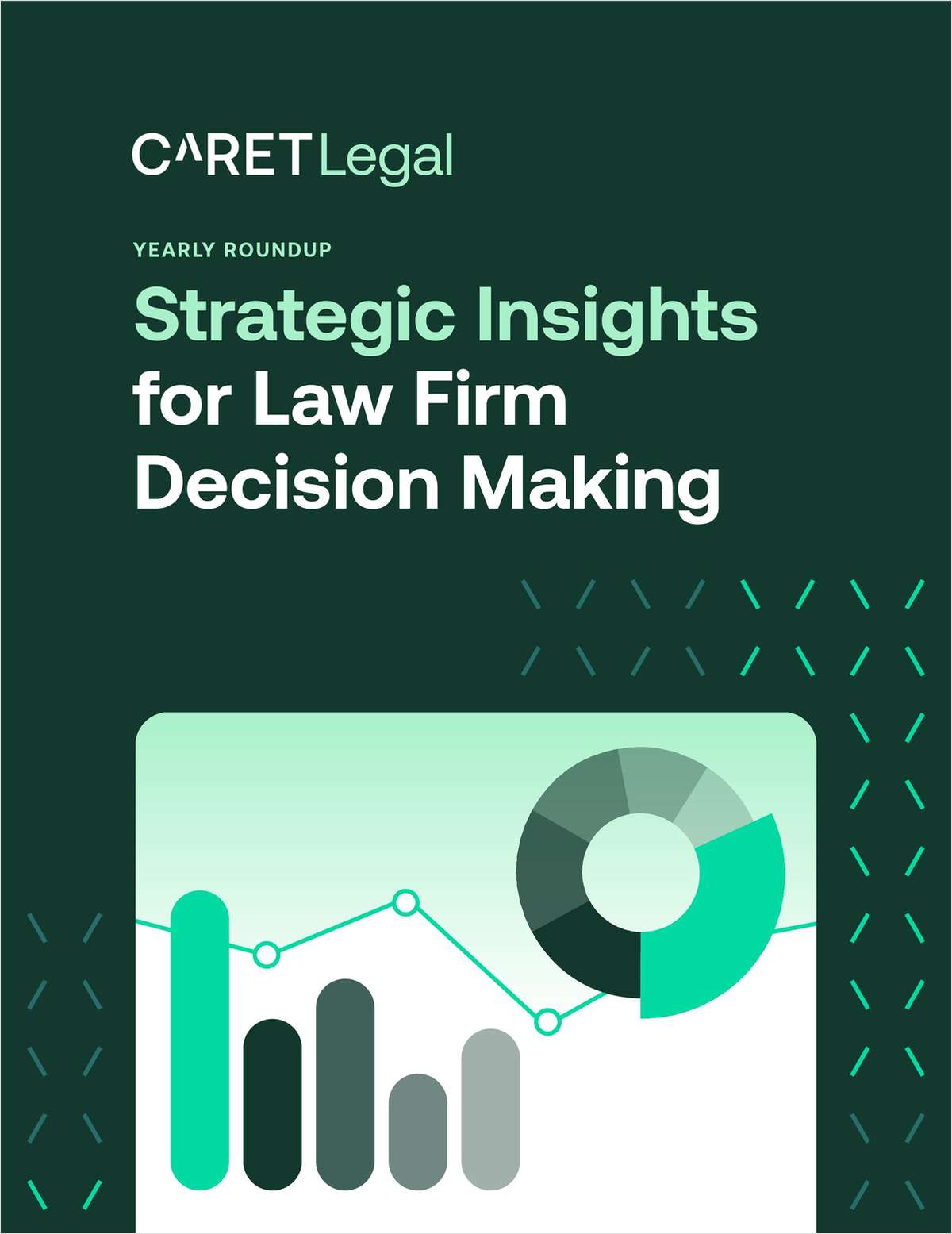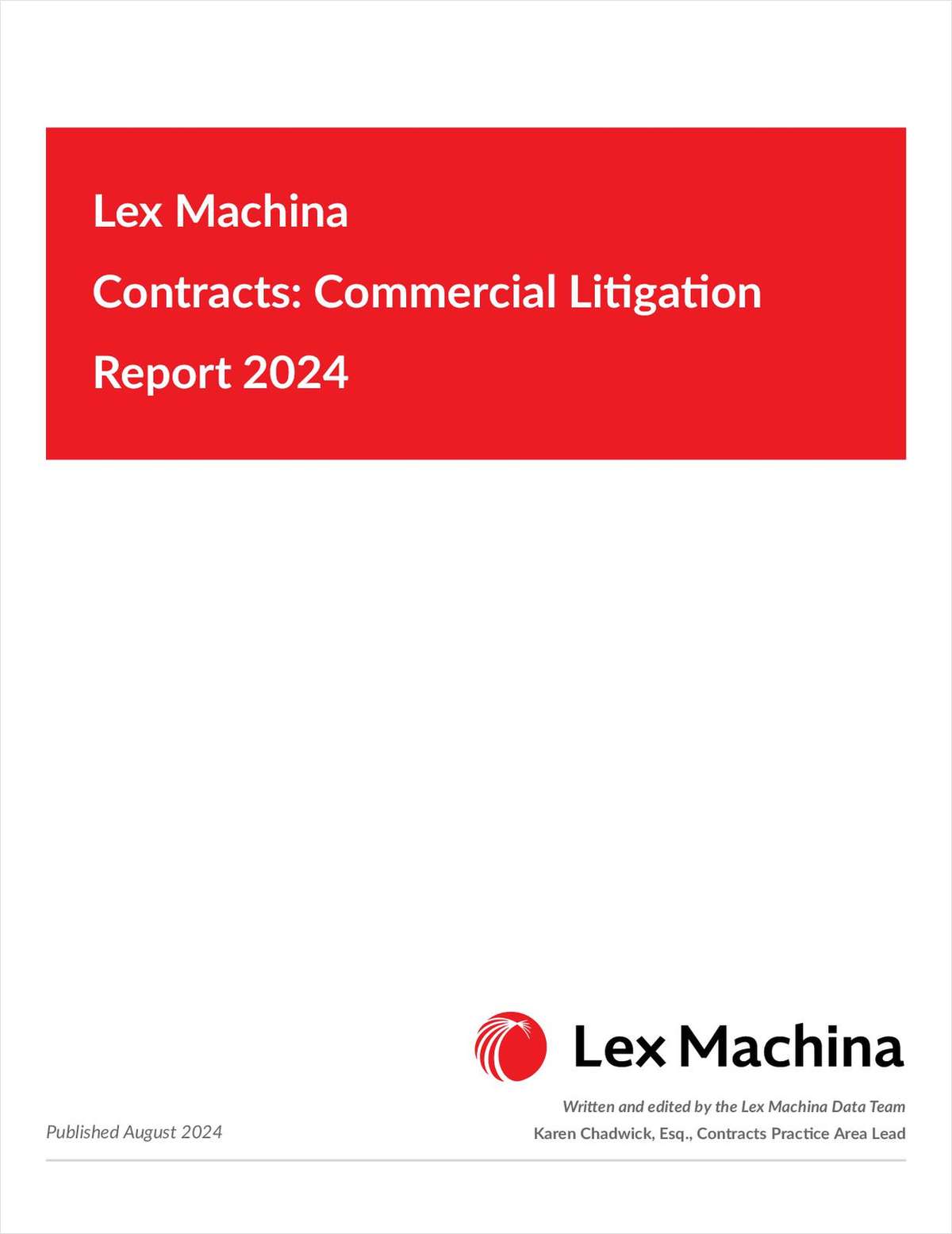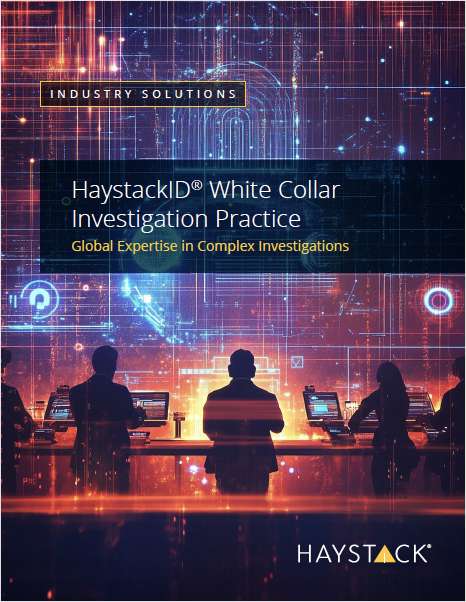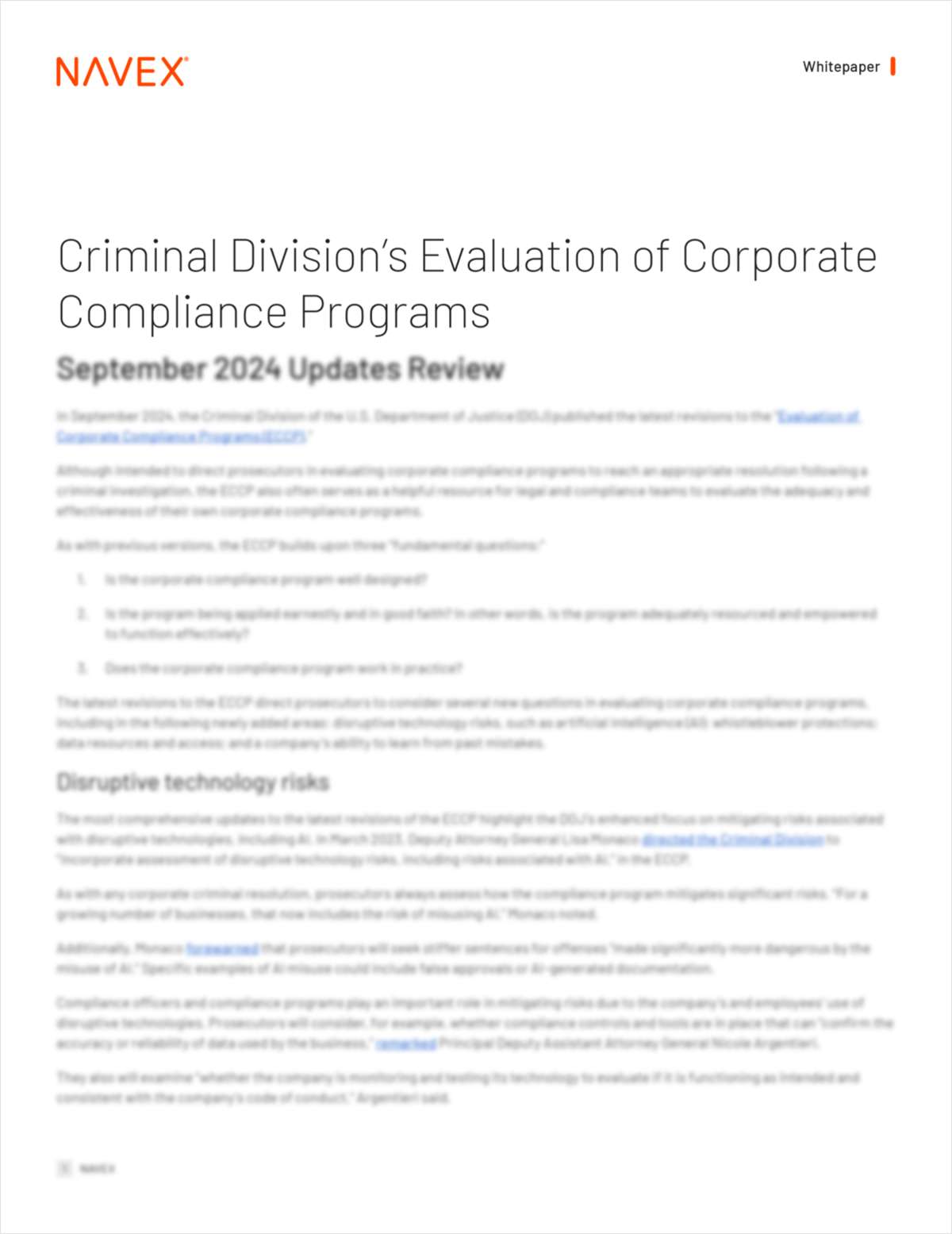10 Years, 5 Perspectives: The Biggest Legal Tech Changes of the Past Decade
Some of the biggest changes in the legal tech space since 2010 aren't just about technical advances, but also how technology has been perceived—and purchased–by legal clients.
December 19, 2019 at 07:00 AM
7 minute read
The original version of this story was published on Legal Tech News

It may be a surprise to some that there was legal technology back in 2010. But they could be forgiven for their lack of historical perspective. After all, the way legal technology is deployed, designed and purchased has changed so much over the past decade that it can seem like a fairly new phenomenon.
In the eyes of those operating at different corners of the legal market, such changes can look quite different. But all this evolution has one thing in common: it's fueled by a growing acceptance of technology and the disruption it brings.
Legaltech News reached out to get a number of different perspectives—an in-house lawyer, a law firm partner, an e-discovery expert, a legal department consultant, and the founder of an alternative legal services provider—to ask them what they see as the biggest legal tech changes over the past decade. These are some of the best answers, which have been edited for clarity and length.
Brad Blickstein, principal, Blickstein Group
The Effect of Legal Ops on Technology: The legal operations space has been growing since well before 2016. There were dozens of those people at the beginning of the decade and hundreds now.
The main thing now is that legal ops people create an environment and a function that can provide business discipline to the law department. There was law department technology all the way back to the late 1980s, [but] it was hard to get that stuff purchased and implemented largely because there was no one in charge of doing that.
So now there are actually people who are professionals at figuring out what problems should be solved, identifying the right technology to solve them and implementing the technology. A large part of the proliferation of legal technology, especially on the law department side, is because there is someone to sell it to, someone to use it
The Acceptance of AI: Up until a few years ago there was no way that legal teams were going to use AI. They just believed that legal work could only be done by humans, and machines could not be the answer. They were not the least bit interested in that topic to the point where the early AI tools… the first ones kind of failed, and the next wave of them they wouldn't even call themselves AI.
In the legal industry today, predictive coding would have been called AI, but lawyers didn't want to buy AI… they were afraid of that. Now AI seems to be a benefit to lawyers. A lot are still afraid, but there are plenty that are not. [In the past], nothing that was considered legal work or quasi-legal work was done by machine. Ten years later, a meaningful amount of work is done by machines. That is a big change, and that may end up being the biggest impact on the legal industry that we have seen.
James Michalowicz, legal operations business performance senior manager, TE Connectivity
AI and Analytics: [A big change is the] willingness to experiment with analytics and AI tools to gain insight and bring greater efficiency and effectiveness to the delivery of legal services. We can start with litigation, with especially technology-assisted review (TAR) in e-discovery and analytics to be able to do some assessments for your litigation strategy. One is driving efficiency—the use of TAR— while the other is really making use of big data to establish for your litigation, what venue you're in, what judge, who is the opposing counsel, and to profile your case and help make decisions relative to your strategy.
Legal Operations and Project Management: Law departments' operations and also legal project management really helped to enable a technology roadmap, and therefore to apply technology to good processes. So instead of just looking for technology to fix something, we now have much more sophisticated buyers and users who are implementing those tools in a way that supports an overall kind of strategy and roadmap. I think what that has led to is the evolution of enterprise legal management (ELM), looking at this much more holistically instead of saying, 'I need to fix this one practice area or need another tool to fix this.'
Ben Levi, co-founder and COO, InCloudCounsel
The Way Services Are Delivered: I think some of the most consequential changes have actually happened outside the legal sphere. Traditionally, at least by reputation, the legal industry is slow moving and risk-adverse. [But] outside of their legal career, people have taken Ubers to work, they have ordered their dinner on any number of platforms, they've found a parking spot [using an app], they've stored their documents in Dropbox.
They've understood that sort of traditional services can be delivered in nontraditional ways and the outcome can be better. And I think that has sort of seeped into everyone's lives and with that… it has increased lawyers' willingness to change how legal services are delivered.
Alison Grounds, partner, Troutman Sanders and founder and managing director, Troutman Sanders eMerge
The People: Legal technology has expanded into its own substantive practice area with dedicated professionals, rather than relying on vendors or traditional IT resources. As technology and the law have continuously and rapidly evolved, the market has expanded for attorneys and technologists who understand the legal requirements and needs of specific areas, such as e-discovery and litigation, and can apply practice-specific technology to solve client needs. E-discovery was one of the first areas where practice-specific technology and tech-savvy attorneys became necessary and valued to reduce the costs and burdens of handling the increasing volumes of data and changing legal requirements.
Lawyers and technologists with practice-specific expertise now also deliver legal technology consulting and related services supporting many legal areas such as breach response, legal operations, contract management, and more. In some instances, these practices are stand-alone subsidiaries of law firms and include diverse professionals such as custom developers and programmers, data analysts and scientists, data security and privacy experts, and project managers.
Tess Blair, partner, Morgan Lewis
Disaggregation: The connectivity that we all take for granted now created the foundation for the disaggregation that has fundamentally changed the practice of law in important ways. One significant change it fueled is disaggregation.
When I started practicing, a client hired a law firm and that firm did all of the work on the case the client needed. When technology, and in particular document management platforms, became web-based and offered connectivity outside the law office to your client and data, disaggregation started to get real traction. What began by enabling geographically diverse firms with different strengths to act as co-counsel to a client has created an entirely new legal ecosystem—LPOs, ALSPs, consultants and accounting firms, new law service providers, and of course increased competition between law firms.
Connectivity made possible a much broader array of options for clients, which has in turn created competition for law firms. In my humble opinion, that competition has been mostly good for the profession because it has sparked healthy collaboration and innovation from which both clients and their lawyers benefit.
This content has been archived. It is available through our partners, LexisNexis® and Bloomberg Law.
To view this content, please continue to their sites.
Not a Lexis Subscriber?
Subscribe Now
Not a Bloomberg Law Subscriber?
Subscribe Now
NOT FOR REPRINT
© 2024 ALM Global, LLC, All Rights Reserved. Request academic re-use from www.copyright.com. All other uses, submit a request to [email protected]. For more information visit Asset & Logo Licensing.
You Might Like
View All
The Path in the Multiverse: Rethinking Client Engagement Through Gamification
6 minute read


Law Firms Mentioned
Trending Stories
- 1Gibson Dunn Sued By Crypto Client After Lateral Hire Causes Conflict of Interest
- 2Trump's Solicitor General Expected to 'Flip' Prelogar's Positions at Supreme Court
- 3Pharmacy Lawyers See Promise in NY Regulator's Curbs on PBM Industry
- 4Outgoing USPTO Director Kathi Vidal: ‘We All Want the Country to Be in a Better Place’
- 5Supreme Court Will Review Constitutionality Of FCC's Universal Service Fund
Who Got The Work
Michael G. Bongiorno, Andrew Scott Dulberg and Elizabeth E. Driscoll from Wilmer Cutler Pickering Hale and Dorr have stepped in to represent Symbotic Inc., an A.I.-enabled technology platform that focuses on increasing supply chain efficiency, and other defendants in a pending shareholder derivative lawsuit. The case, filed Oct. 2 in Massachusetts District Court by the Brown Law Firm on behalf of Stephen Austen, accuses certain officers and directors of misleading investors in regard to Symbotic's potential for margin growth by failing to disclose that the company was not equipped to timely deploy its systems or manage expenses through project delays. The case, assigned to U.S. District Judge Nathaniel M. Gorton, is 1:24-cv-12522, Austen v. Cohen et al.
Who Got The Work
Edmund Polubinski and Marie Killmond of Davis Polk & Wardwell have entered appearances for data platform software development company MongoDB and other defendants in a pending shareholder derivative lawsuit. The action, filed Oct. 7 in New York Southern District Court by the Brown Law Firm, accuses the company's directors and/or officers of falsely expressing confidence in the company’s restructuring of its sales incentive plan and downplaying the severity of decreases in its upfront commitments. The case is 1:24-cv-07594, Roy v. Ittycheria et al.
Who Got The Work
Amy O. Bruchs and Kurt F. Ellison of Michael Best & Friedrich have entered appearances for Epic Systems Corp. in a pending employment discrimination lawsuit. The suit was filed Sept. 7 in Wisconsin Western District Court by Levine Eisberner LLC and Siri & Glimstad on behalf of a project manager who claims that he was wrongfully terminated after applying for a religious exemption to the defendant's COVID-19 vaccine mandate. The case, assigned to U.S. Magistrate Judge Anita Marie Boor, is 3:24-cv-00630, Secker, Nathan v. Epic Systems Corporation.
Who Got The Work
David X. Sullivan, Thomas J. Finn and Gregory A. Hall from McCarter & English have entered appearances for Sunrun Installation Services in a pending civil rights lawsuit. The complaint was filed Sept. 4 in Connecticut District Court by attorney Robert M. Berke on behalf of former employee George Edward Steins, who was arrested and charged with employing an unregistered home improvement salesperson. The complaint alleges that had Sunrun informed the Connecticut Department of Consumer Protection that the plaintiff's employment had ended in 2017 and that he no longer held Sunrun's home improvement contractor license, he would not have been hit with charges, which were dismissed in May 2024. The case, assigned to U.S. District Judge Jeffrey A. Meyer, is 3:24-cv-01423, Steins v. Sunrun, Inc. et al.
Who Got The Work
Greenberg Traurig shareholder Joshua L. Raskin has entered an appearance for boohoo.com UK Ltd. in a pending patent infringement lawsuit. The suit, filed Sept. 3 in Texas Eastern District Court by Rozier Hardt McDonough on behalf of Alto Dynamics, asserts five patents related to an online shopping platform. The case, assigned to U.S. District Judge Rodney Gilstrap, is 2:24-cv-00719, Alto Dynamics, LLC v. boohoo.com UK Limited.
Featured Firms
Law Offices of Gary Martin Hays & Associates, P.C.
(470) 294-1674
Law Offices of Mark E. Salomone
(857) 444-6468
Smith & Hassler
(713) 739-1250








